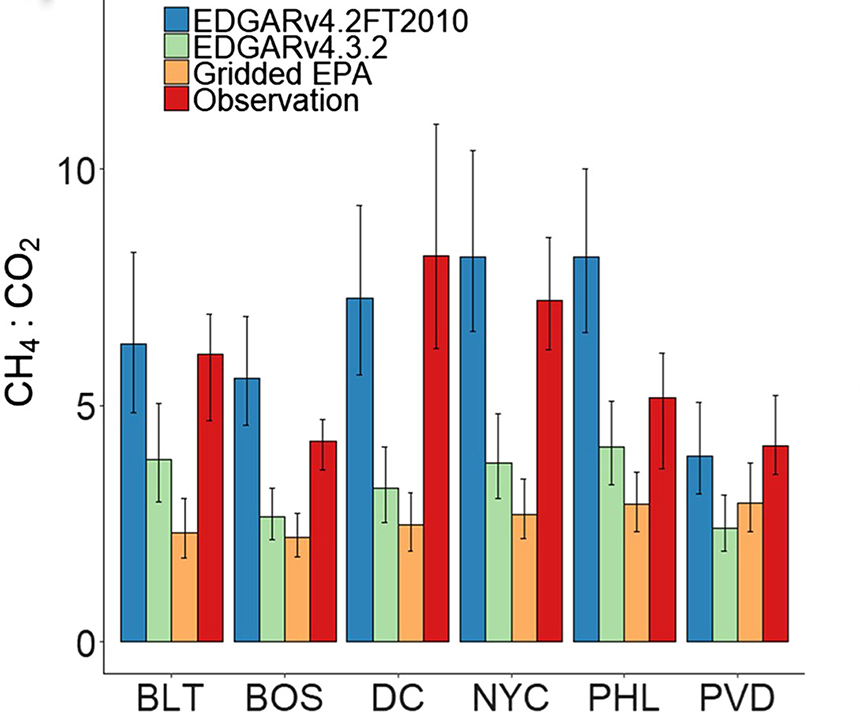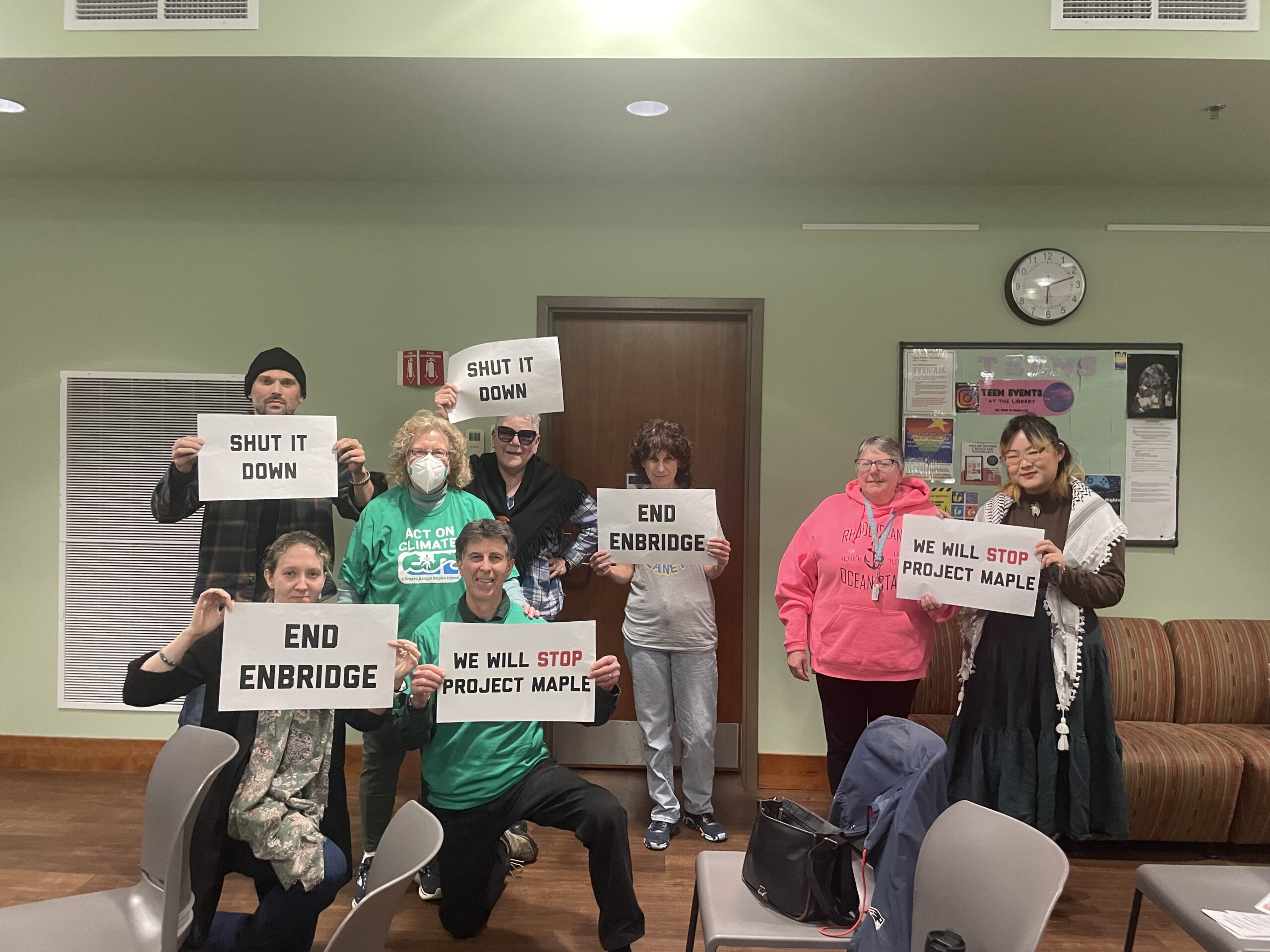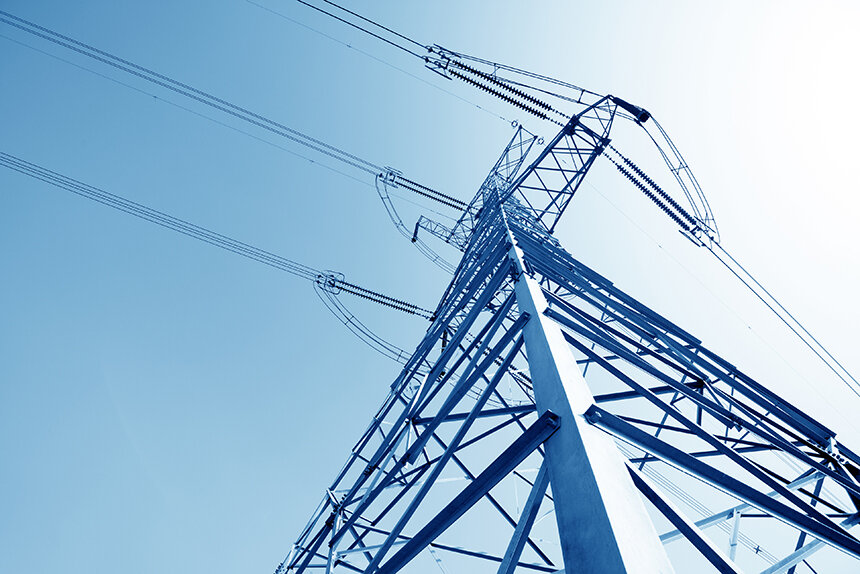Study Finds Climate Emissions Higher in the Northeast
Natural gas leaks kill trees and spew climate-altering methane
August 26, 2019
Gas leaks are a still a big problem and perhaps worse than initially believed.
A new study of Northeast cities such as Providence and Boston found that emissions of natural gas and methane were higher than previous estimates, including projections by the Environmental Protection Agency (EPA).
The study Large Fugitive Methane Emissions From Urban Centers Along the U.S. East Coast conducted by researchers at the University of Michigan and the National Oceanic and Atmospheric Administration used airplane surveillance of downwind gas blooms to measure greenhouse gases. It found that Boston and New York are emitting twice as much methane as projected, likely from leaks called “end-of-use” emissions from pipes beneath streets, from service lines, and from appliances inside homes.

Providence also measured for greenhouse gases higher than previous surveys. However, the city is the smallest of the six surveyed and therefore the volume of emissions was considered insufficient to be accurate.
“Providence was the hardest one we sampled to get very robust conclusions,” said Eric A. Kort, co-author of the study and an assistant professor in the Climate and Space Sciences and Engineering department at the University of Michigan.
Nevertheless, the conclusions reached from the five other urban areas reinforce pleas for repairing gas leaks in and around homes. According to the EPA, methane has up to 36 times the global warming impact as carbon dioxide over 100 years.
Southboro, Mass., resident Bob Ackley, of Gas Safety Inc., has been tracking gas leaks in neighborhoods across southern New England for 10 years, sounding the alarm about tree damage and other environmental impacts.
Ackley, a retired leak-detection contractor for utilities, said the biggest leaks, called “super emitters,” are 7 percent of leaks but account for 50 percent of all discharges. He said climate impacts from gas leaks are avoidable, while the damage to trees can be fatal, costing communities untold money for tree care and removal.
“National Grid is paying towns for damage to trees, but they don’t want to tell anyone,” Ackley said.
He noted that the primary gas company for Rhode Island created an online map of leaking pipes for its service territory in eastern Long Island. Plans are underway for a similar website covering Massachusetts. But National Grid declined to say if it will create one for Rhode Island.
“If it’s good for New York, then it’s good for Rhode Island to identify gas leaks,” Ackley said.
National Grid also didn’t comment on the recent gas-leak study. But a spokesman said the company is making progress on its goal of eliminating all leaks within the next 15 years. In the past 10 years, the company has spent $440 million replacing 445 miles of leak-prone pipes across Rhode Island, according to the spokesman. Annual leaks have dropped from a high of 3,660 in 2009 to just under 2,000 in 2018, he said.
National Grid expects to spend $62.89 million to abandon and replace 61 miles of pipe in 2019 and 2020 and 65 miles in 2021. New equipment is also being deployed to repair leaky joints in cast-iron gas mains, a new process that extends their use for up to 50 years.
In its gas safety and reliability plan for fiscal 2020, National Grid intends to replace a 1.3-mile stretch of a major gas main on Atwells Avenue in Providence, a segment of cast-iron pipes installed in the 1870s that ruptured four times during the winter of 2017-18.
The upgrades, of course, aren’t free. It will cost the average customer $20.81 more this year to pay for repairs to and replacement of natural-gas pipelines, some installed more than 100 years ago. These outdated pipes are also made of steel, wrought iron, and a crack-prone plastic first used in 1965.
Growing gas use
National Grid’s Southern Rhode Island Gas Expansion Project is expected to cost $44.46 million and is being done so new customers can receive service in this fast-growing region of the state. The work includes installing 5 miles of 20-inch gas main underneath Route 2 in East Greenwich, Warwick, and West Warwick. The new pipeline is expected to reduce strain on National Grid’s liquefied natural gas (LNG) storage facility in Exeter. The LNG tank facility is also slated for a $1.4 million upgrade.
National Grid has said the major gas leak of 2017 was the fault of an independent contractor working on equipment not owned by the utility. Nevertheless, the company is rebuilding its major gas pipeline interchange at the site of the leak on Allens Avenue. The upgrades, which were planned before the leak, are expected to reduce leaks and protect the facility from flooding and severe weather.
As of Dec. 31, 2017, National Grid had 3,205 miles of natural-gas pipeline in Rhode Island; 1,190 miles, or 37 percent, is prone to leaks. This at-risk pipe includes 395 miles of unprotected steel, 745 miles of cast-iron and wrought-iron gas mains, and 50 miles of pipe made of outdated plastic.
Meanwhile, Ackley will be taking his van equipped with gas-measuring equipment on an extended road trip to detect gas leaks at Yellowstone National Park, Four Corners Monument, and other tourist attractions out West. You can follow his findings on Twitter @GasSafetyUSA.
Categories
Join the Discussion
View CommentsRecent Comments
Leave a Reply
Related Stories
Your support keeps our reporters on the environmental beat.
Reader support is at the core of our nonprofit news model. Together, we can keep the environment in the headlines.
We use cookies to improve your experience and deliver personalized content. View Cookie Settings




Thanks Tim for this informative article, I’d guess many, like me, had little idea about these leaks and the costs for the needed line upgrades.
I used to be a Providence Gas Co stockholder before it was sold to out of state companies, eventually National Grid. It was run by Jim Dodge who had a hand in starting Grow Smart RI to advocate for policies that promote development in built up areas with existing infrastructure rather than sprawl. His motive in part was to minimize the expense of building long pipelines to the boonies with relatively few customers. Providence Gas had their office downtown on Weybosset where you could pay bills, buy a gas range, get help on services…. Now the office is totally gone, last I heard there isn’t even a place to pay a Grid bill downtown, National Grid has no appret iterest in better RI land use. Another story of out of state companies taking over RI business and lost local perspective or even the business (think Almac’s. Industrial National Bank (later Bank of America which abandoned the Superman building) The Providence Journal, Outlet Company (that owned Channel 10) and more. But stockholders got a premium price for their stock for giving up control.
Grow Smart still exists and does a good job in advocating for responsible growth, but for the most part smart growth ideas are ignored by both the many companies that move to greenfields (think Fidelity, Citizens Bank, Neighborhood Health, Amica, CVS, Channel 10…) and politicians that encourage it, building highways and special exit ramps to facilitate sprawl and even moved some state offices out of the Capitol Hill area to sprawl locations, all requiring lots of driving
Governor Baker’s administration promotes expansion of fracked gas infrastructure in Massachusetts. See: https://www.bizjournals.com/boston/blog/mass_roundup/2016/05/baker-administration-pushes-natural-gas-at.html
Meanwhile, fossil fuel executives contribute generously to Baker’s reelection campaign war chest. See: https://commonwealthmagazine.org/environment/politics-behind-the-plug/
Fundamental choice here: triage, or transformation? Our study out yesterday showed these leaks are massively important for our task of decarbonizing the state’s economy. We need a plan to systematically shut off the gas. Leaks are essentially inevitable. Compressors, for example, leak by design. This is not to say that we shouldn’t address the super-emitters. Rather, that we should get beyond that to other ways to heat homes and cook our foods.